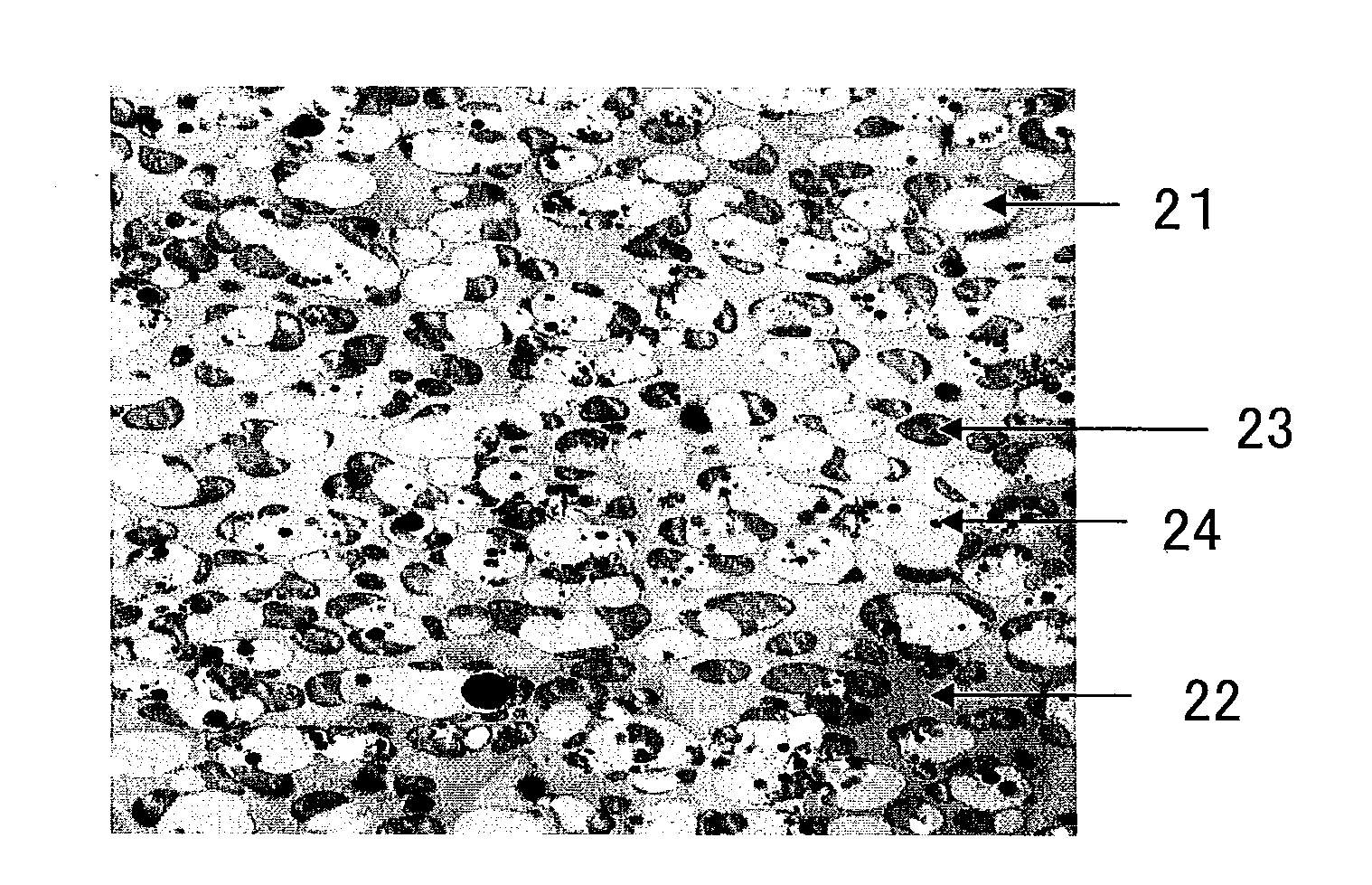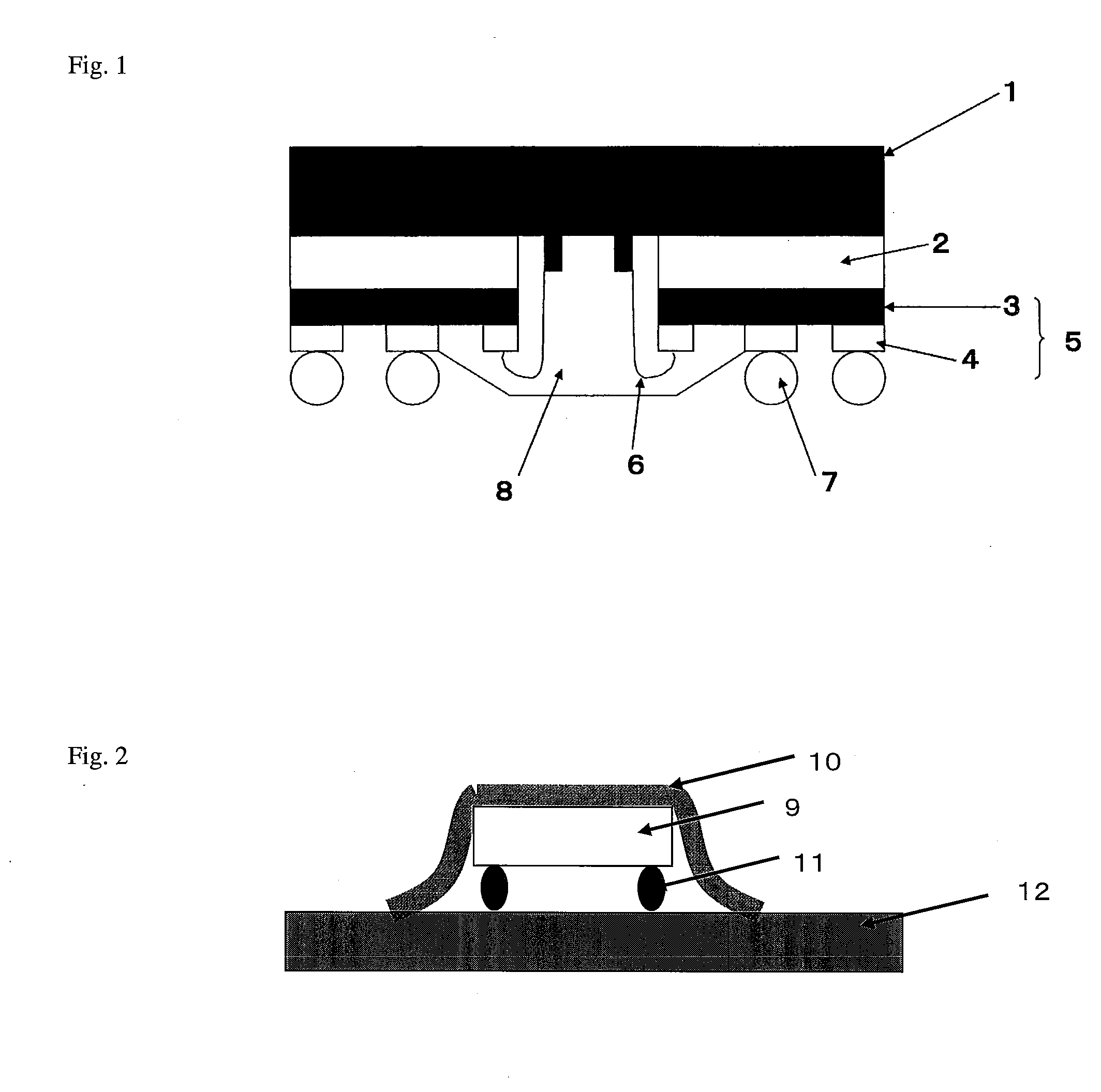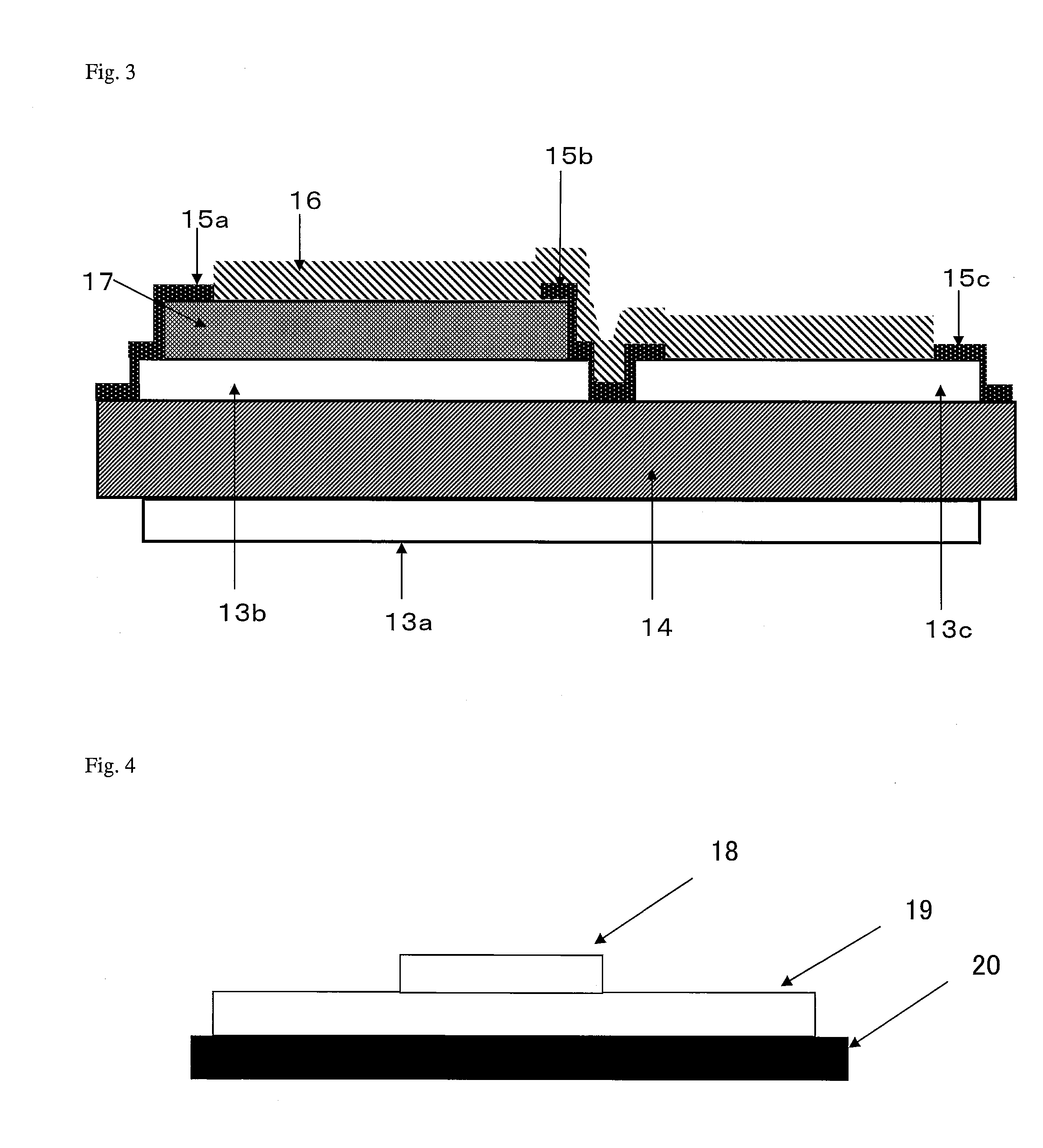Adhesive composition for electronic components, and adhesive sheet for electronic components using the same
- Summary
- Abstract
- Description
- Claims
- Application Information
AI Technical Summary
Benefits of technology
Problems solved by technology
Method used
Image
Examples
referential example 1
Synthesis of Organopolysiloxane A-1
[0152]To 120 g of methylsilicone oil (PDV-0325, produced by Gelest, Inc.) was mixed 2.3 g of a 35% aqueous sulfuric acid solution under nitrogen at room temperature for 9 hours. The mixture was left in a refrigerator overnight, diluted with ice water, and then neutralized at a temperature of 5° C. or lower by the addition of an aqueous sodium hydroxide solution. The mixture was extracted fully with ether and distilled after drying, so that methylsilicone oil having a hydroxyl group was obtained. Subsequently, epichlorohydrin in an amount 10-fold molar equivalent based on hydroxyl groups was added thereto. The mixture was heated and refluxed at 120° C. with stirring and 40% by weight sodium hydroxide in an amount two-fold molar equivalent with respect to hydroxyl groups was added dropwise over 4 hours. After the completion of the dropwise addition, heating was continued for 15 minutes to remove water completely, and then unreacted epichlorohydrin wa...
reference example 2
Synthesis of Organopolysiloxane (A-5)
[0153]Organopolysiloxane A-5 was obtained in the same manner as in Reference Example 1 except for using phenylmethylsilicone oil (PDV-1625 produced by Gelest, Inc.) instead of methylsilicone oil.
referential example 3
Synthesis of Organopolysiloxane (A-6)
[0154]Phenylsilicone Oil Having an Epoxy Group was Obtained in the same manner as in Reference Example 1 except for using phenylsilicone oil (PDS-9931 produced by Gelest, Inc.) instead of methylsilicone oil and adding epichlorohydrin in an amount equimolar equivalent to hydroxyl groups. Then, phenyldimethylsilane (SIP6729 produced by Gelest, Inc.) having hydrosilyl groups in an amount equimolar to unreacted hydroxyl groups, platinum-1,3-divinyl-1,1,3,3-tetramethyl-disiloxane complex (produced by Gelest, Inc.), and 1,3-divinyltetramethyldisiloxane were added so that the amount of each would become 200 ppm, obtaining organopolysiloxane S in which all the unreacted hydroxyl groups were alkyl-modified.
[0155]A product resulting from mixing the organopolysiloxane A-5 obtained in Reference Example 2 and the organopolysiloxane S in a weight ratio of 1:2 was named organopolysiloxane A-6.
PUM
| Property | Measurement | Unit |
|---|---|---|
| Temperature | aaaaa | aaaaa |
| Temperature | aaaaa | aaaaa |
| Fraction | aaaaa | aaaaa |
Abstract
Description
Claims
Application Information
 Login to View More
Login to View More - R&D
- Intellectual Property
- Life Sciences
- Materials
- Tech Scout
- Unparalleled Data Quality
- Higher Quality Content
- 60% Fewer Hallucinations
Browse by: Latest US Patents, China's latest patents, Technical Efficacy Thesaurus, Application Domain, Technology Topic, Popular Technical Reports.
© 2025 PatSnap. All rights reserved.Legal|Privacy policy|Modern Slavery Act Transparency Statement|Sitemap|About US| Contact US: help@patsnap.com



